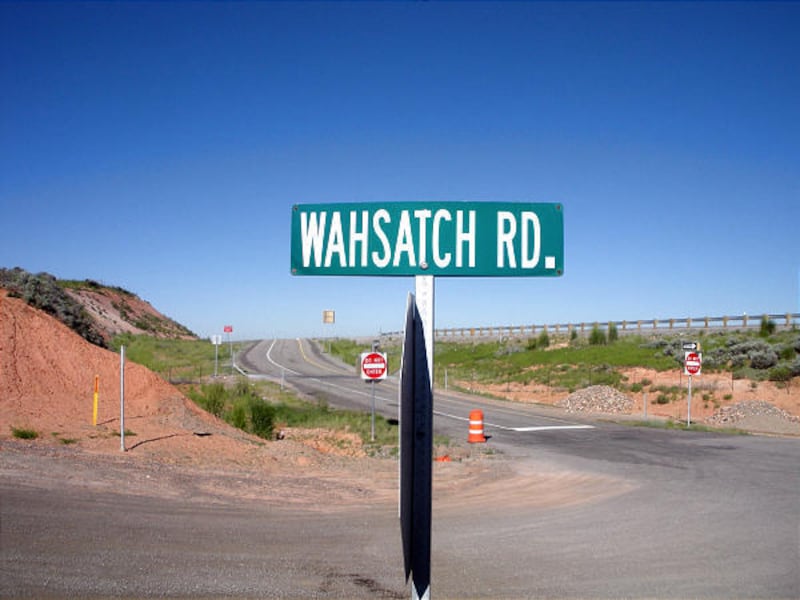Is it Wasatch or Wahsatch? How about Uinta or Uintah?
The answer is they are all correct depending on the usage, and have some interesting history behind them as well.
Though Wasatch is the accepted spelling for the mountain range and a county east of Salt Lake City, there once was a town named Wahsatch located along I-80 at east end of Echo Canyon about 24 miles southwest of Evanston, Wyo. It was named for Chief Wahsatch, a Shoshone Indian whose name was spelled that way, according to John W. Van Cott's book "Utah Place Names."
Wahsatch sprang up as a railroad town in 1868. Hundreds lived there in its frantic heyday, but eventually it became desolate when Evanston took over as the area's railroad hub. Now a ghost town, it is still listed as Wahsatch on the official Utah highway map.
But it is apparently one of few instances in Utah where Wasatch is still spelled with an 'h.'
Kent Powell, a Utah State Historical Society historian, said he's also wondered if Wasatch and Wahsatch weren't just two different spellings of the same word. Chief Wahsatch, he said, likely did not learn to spell his name in English and so someone else probably came up with the spelling.
Clarence King of the U.S. Geological Survey worked in Utah in 1869 and his photograph titled "Wahsatch limestone cliffs" supports the notion of that spelling once being applied to the mountain range.
Wasatch is a Ute Indian word meaning "mountain pass" or "low place in a high mountain," according to Van Cott.
Besides the lone place name using the Wahsatch spelling, a few current organizations and events have adopted it.
For example, there's the Wahsatch Shooters Association and two footraces — the Wahsatch Steeplechase and Wahsatch Rendezvous.
In addition to Wasatch/Wahsatch, there is another Utah place name spelled with and without an 'h' — Uintah and Uinta. There seems to be some question, even a little controversy, over the missing or added letter.
According to History to Go, an online historical resource by the Utah State Historical Society/Utah State History Department, early maps usually attached an 'h' to the end of Uintah. However, it was left off of Maj. John Wesley Powell's publications from his 1869 geographic expedition as being unnecessary for pronunciation of the word.
There's even a possible dark side to the Uintah spelling. Some descendants of the original Indians of the Uintah Valley Reservation suspect that in 1902 the federal government added the "h' to Uinta to distort the true identity of the Uinta Indians and to distance itself from an 1861 executive order that created the Uinta Valley River Reservation. At the same time, they wondered whether it was just mistake made by a government typist.
Uinta/Uintah also is a Ute Indian word and there is some disagreement on its meaning. It either refers to land at the edge of pines or streams of water or living high up where timber grows, according to "A History of Uintah County" by Doris Karren Burton.
Local historians see the spelling more as a matter of expediency.
"I have been told that for Uinta/Uintah that Uinta is applied to natural features- — Uinta Basin, Uinta Mountains, Uinta River — while Uintah is for political or names — Uintah County, Uintah Indian Reservation, Uintah Stake, etc.," Kent Powell said.
Burton essentially agrees. "The National Board of Geographic names applies the spelling Uintah to political subdivisions, such as counties, reservations, etc., and the spelling Uinta to mountains, streams, and other geographic features.
For example, there's Uintah County, Uintah town in Weber County and Uintah High School in Vernal. Meantime, there is the Uinta Mountains and the Uinta National Forest.
Floyd O'Neil, director emeritus of the American West Center at the University of Utah, said there's really no way to know for certain about how the spellings came to be, adding "This all creates a great spelling bog."
e-mail: lynn@desnews.com

